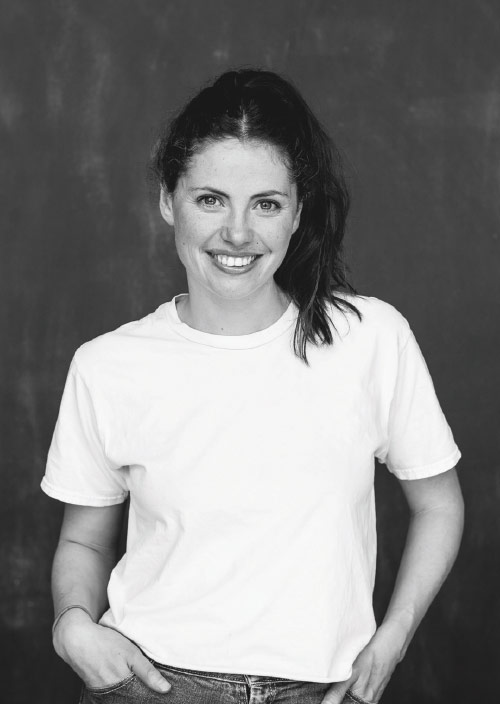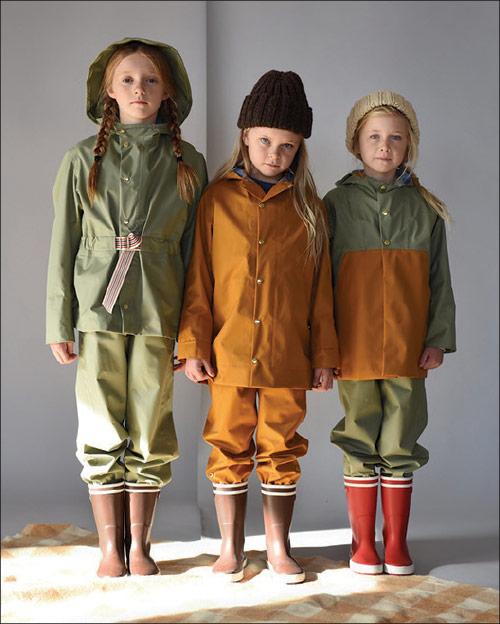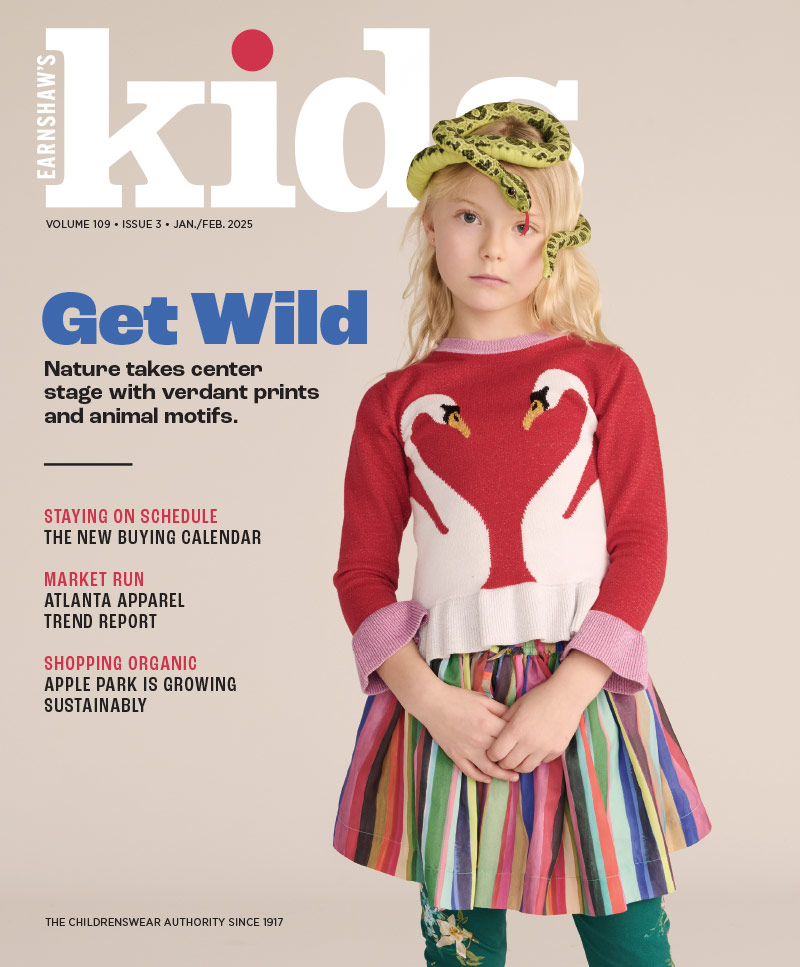From getting her master’s at Antwerp Royal Academy in Belgium to her time designing for couture labels in the UK, Osler’s collections focused on sustainable material innovation, including the use of natural and recycled fibers.

Tabitha Osler
Sustainability has always been at the forefront of Tabitha Osler’s designs. From getting her master’s at Antwerp Royal Academy in Belgium to her time designing for couture labels in the UK, Osler’s collections focused on sustainable material innovation, including the use of natural and recycled fibers. After having her first child, Osler found a new outlet for her creativiy. “I wanted my muse to be a child, and I wanted to create an impact on the generation that’s growing into a world affected by climate change,” she says, stressing the importance of a circular economy.
Faire Child became the embodiment of that mission when it started selling raincoats made from 100 percent recycled plastic bottles in May 2018. The collection of waterproof raincoats, rain pants and anoraks was an instant hit with urban parents who appreciated the innovative fabrics and heritage aesthetic. “They’re trendsetters who love the high-functioning, luxury material and see the brand as a way to create change with their buying habits,” Osler says, adding that design is an equally important selling point. In fact, the Fall ’19 collection is a complete redesign, featuring traditional raincoats, waistcoats, striped overalls and wide-brim hats in rustic oranges and soft sage greens inspired by heritage workwear from the ’30s and ’40s. “Customers love seeing their kids step out of time from the past while still wearing modern technology,” she says. “That marriage really works.”
When building Faire Child, Osler was careful to weave the sustainable thread through the entire business. In addition to being made from recycled, eco-tech certified material, each garment features upcycled elastic, thread and brass and is packaged with compostable materials. Osler also offers a Take Back program, where customers can return worn out items to be disassembled and recycled into another plastic bottle or fabric. “It’s important not just to divert waste but ensure garments never end up in a landfill,” she says, noting designs are all machine washable and dryer safe. “I don’t want to be hypocritical at any stage of the process.”
So far so good, Osler reports. Her most frequently asked question is when will adult sizes be available. The answer is this spring when Faire Child introduces a capsule collection in collaboration with The Garment Life. “The Mommy- and Daddy-and-Me trends are big right now, and I think my customers will love that,” Osler says, adding that she also wants to introduce insulating under layers in children’s sizing. “We want Faire Child to be a year-round company, so layering for winter is important.” — Aleda Johnson
 How’s business? We launched in May and missed the spring season, but it’s been really busy these last few months. We’ve done well selling direct-to-consumer, and we’re going to Playtime Paris in January to launch our wholesale campaign where we hope to also connect with U.S. customers.
How’s business? We launched in May and missed the spring season, but it’s been really busy these last few months. We’ve done well selling direct-to-consumer, and we’re going to Playtime Paris in January to launch our wholesale campaign where we hope to also connect with U.S. customers.
Why is the fashion quotient as equally important as the functional aspects of your designs? As a mother, I focus more on my child’s fashion than I do my own! I look to Italians for that answer because they’ve been dressing their children impeccably forever. In North America, we’re just starting to see that. I can tell you my three-year-old is already very opinionated. Fashion is very powerful because it can help sculpt your identity.
What is your favorite Faire Child design? Our classic raincoat is beautiful. When I found the original hunting coat I created the pattern from, I was so excited. We source all the inspiration pieces from The Vintage Showroom in London that collects clothing from around the world. Everything is exquisite from the fabrics to embellishments to patinas. It’s like walking into this dream come true.
What is something you would never include in your designs? Probably prints, for now. While our fabric supplier doesn’t offer prints at the moment, I also just want the pieces to be timeless. Bringing in prints can be too seasonal and not something that will last five to 10 years.
What do you love most about being a designer? There’s something very magical about creating something from nothing. You’re bringing something into the world from your imagination. It’s just the greatest gift to see people wearing, appreciating and loving your designs. I get a tingly feeling every time.





 FASHION IS MY PLAYGROUND
FASHION IS MY PLAYGROUND 
 The Chi
The Chi



 The
The

 The top expo for kids and baby
The top expo for kids and baby
 The 2025 Earnie Awards are officially OPEN! I
The 2025 Earnie Awards are officially OPEN! I


 From milestones to everyday magic, @ryleeandc
From milestones to everyday magic, @ryleeandc

 BEST IN SHOW: @milaandrose
Twirl-worthy, pla
BEST IN SHOW: @milaandrose
Twirl-worthy, pla





 This season’s
This season’s



Leave a Comment: